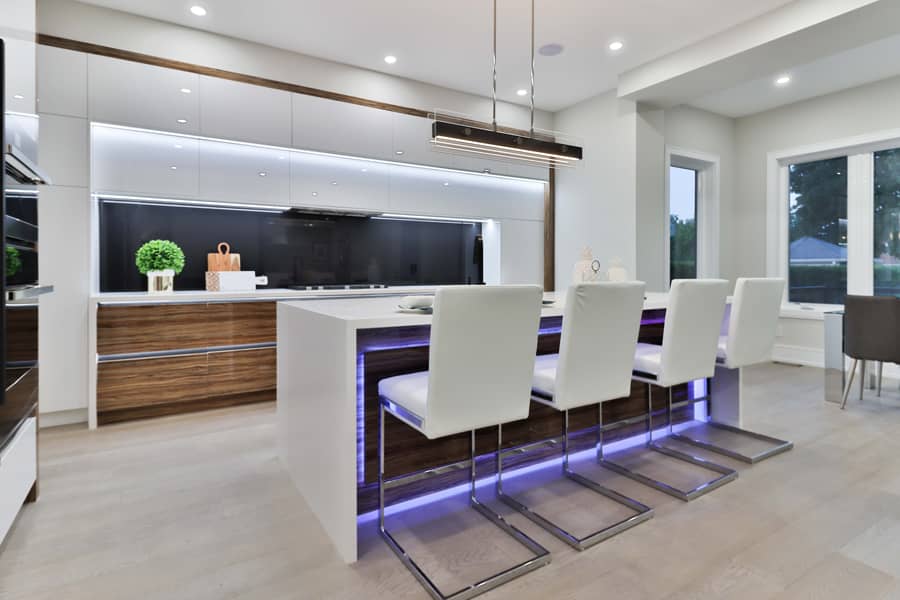Photographing real estate is more than just taking the picture of a house or condo, it’s about showcasing all the features that will draw in potential buyers. It’s not as simple as snapping a few pictures and sending them off to your client either, you need to know what makes a great photo and how it can be used for marketing purposes so you can show off the property at its best.
Here is a summary of some of the major differences you need to be aware of:
- You need to work with a wide-angle lens. The best 35 mm effective range is between 16 mm and 24 mm. The closer to 24 mm you can keep images the better.
- Lighting is a challenge because the same image can have a bright window and a dark corner in it. There are many techniques for dealing with this wide contrast range you will encounter when shooting interiors.
- Verticals and horizontals are super important. The viewer’s eye/brain expects key parts of buildings to be vertical and horizontal. Horizontals and verticals that aren’t straight become a major visual distraction.
- All wide-angle lenses have barrel distortion that must be removed with post-processing software. In other environments, many of these items are not as important, so learning to control these issues can be a big change for some photographers.

Time Is of the Essence
Photography done for real estate agents adds a compressed time demand. That is, you will typically only have a few hours to shoot the photos and you will be expected to deliver them ASAP or at least within 12 hours. Twenty-four hours is a long time to deliver real estate photos. This is simply because you are operating as a part of the agent’s rushed time schedule. Get used to it, it’s part of the business! This ASAP thing is not the agent’s fault. Once the listing agreement is signed, home sellers want to get it on the market yesterday.
The Speed/Quality Trade-Off
Because of this emphasis on shooting and post-processing images quickly, you will find yourself continually trading off speed and quality. One of the most important areas for trading off speed for quality is deciding what your approach will be to lighting. Only having a few hours to shoot the inside and outside of a home forces you to be efficient and frugal with your lighting style. About half of real estate photographers use multiple small flashes and half use some form of bracketing.
Bracketing software takes more time in post-processing on the computer when you get back to your office. Using multiple small flashes has a much lower overall workflow time but there is more of a learning curve to using them. You’ll need to decide which solution for lighting you are going to use.

Generally speaking, real estate agents are not as likely as photography enthusiasts to discern the difference between good quality interior photography and high-quality interior photography. Make sure that you are delivering an appropriate level of quality for what you are charging and what you’re competing against. In large metropolitan areas where there are many real estate photographers competing for the same business, high quality is a bigger competition factor in your success than it is when there’s very little competition.
Related Posts
March 24, 2021
11 Tips for Home Photo Shoot
March 17, 2021
The key success of Real Estate photo editing workflow
March 17, 2021
Getting started in the real estate photography business
March 13, 2021




